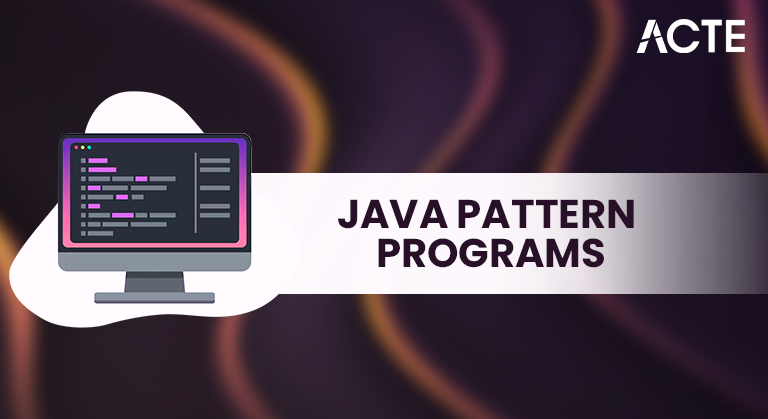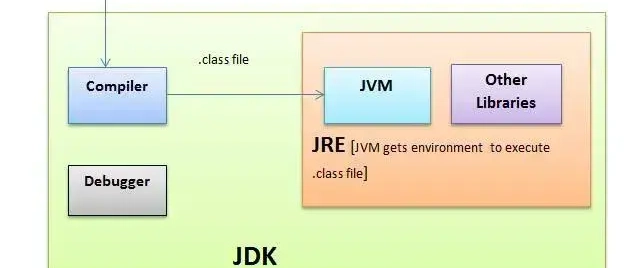
- Introduction to Pattern Programming
- Importance of Pattern Problems in Java Interviews
- Tools and Environment Setup for Java Pattern Programs
- Understanding Nested Loops in Java
- Star Patterns (Right Triangle, Pyramid, Diamond, etc.)
- Number Patterns (Ascending, Descending, Mirror Numbers)
- Alphabet Patterns (A-Z Structures and Symmetries)
- Conclusion
Introduction to Pattern Programming
Pattern programming refers to writing code that displays patterns made up of characters like stars (*), numbers, or alphabets. These patterns are printed using nested loops, and they serve as excellent practice for improving logic-building and problem-solving skills. Java, being one of the most widely used programming languages, is frequently used to implement such patterns. Mastering pattern programs strengthens a developer’s grasp of control flow and loop structures, Web Designing & Development Training which are fundamental to all programming tasks. Pattern programming is a programming technique that involves designing and solving problems using recognizable patterns of logic or structure. These patterns are common sequences or arrangements of code that can be reused to solve specific types of problems efficiently. In the context of learning to code, especially for beginners, pattern programming typically refers to printing patterns using characters, numbers, or symbols such as triangles, pyramids, diamonds, or grids using loops and conditionals. Pattern-based problems are commonly used to strengthen foundational programming concepts like loops (for, while), nested loops, conditionals (if-else), and control flow. They help develop problem-solving skills, logical thinking, and a deeper understanding of how code executes line by line. Though pattern programming may not seem directly applicable to real-world applications, it plays a crucial role in building a strong coding mindset. Languages like C, C++, Java, and Python are often used to practice pattern programming in academic settings and technical interviews. Mastering these patterns improves coding fluency and prepares programmers to handle more complex algorithmic challenges. Whether it’s printing stars in a right-angled triangle or generating number sequences in a pyramid, Importance of Pattern Problems programming is a stepping stone toward writing clean, logical, and efficient code.
To Earn Your Web Developer Certification, Gain Insights From Leading Data Science Experts And Advance Your Career With ACTE’s Web Developer Courses Today!
Importance of Pattern Problems in Java Interviews
Pattern problems are a staple in coding interviews for beginner to intermediate Java developers. Recruiters use these problems to assess a candidate’s understanding of nested loops, conditional logic, and algorithmic thinking. These problems also help in evaluating code clarity, time complexity understanding, and debugging capability. They may seem simple at first but often test a candidate’s ability to manage row-column logic and edge conditions precisely skills essential for real-world programming. Pattern problems hold significant importance in Java interviews, IT Engineer Salary in India especially for entry-level and internship roles. They are frequently used by interviewers to assess a candidate’s grasp of loops, conditionals, and control structures core building blocks of programming. Solving pattern problems in Java demonstrates a candidate’s ability to think logically, write clean code, and use nested loops effectively. These problems may appear simple on the surface, but they require attention to detail, understanding of loop flow, and the ability to break a problem into smaller, manageable parts. Moreover, pattern questions test a candidate’s problem-solving mindset and coding fluency, which are crucial for tackling more complex algorithms later on. By practicing different types of pattern problems such as pyramids, diamonds, or number grids Java developers strengthen their foundational skills and improve their ability to write efficient code under pressure. Overall, pattern problems are not just academic exercises; they serve as a practical tool for evaluating a developer’s readiness for real-world coding challenges.
Tools and Environment Setup for Java Pattern Programs
- Java Development Kit (JDK): Download and install the latest version of JDK (from Oracle or OpenJDK).Required to compile and run Java programs (javac and java commands).
- Text Editor or IDE
- Text Editors: Notepad, Notepad++, Sublime Text, VS Code (with Java extensions).
- IDEs: IntelliJ IDEA, Eclipse, NetBeans – ideal for beginners due to built-in tools and debugging features Become an IT Engineer.
- Online Java Compilers (No Installation Required)
- JDoodle (https://www.jdoodle.com)
- Replit (https://replit.com)
- OnlineGDB (https://www.onlinegdb.com)
- Great for quick testing and practice
- Basic Console/Terminal Access: For compiling and running Java programs using command-line tools.
- No External Libraries Needed: Pattern programs rely on core Java concepts: loops, conditionals, and standard output.
- for (int i = 1; i <= n; i++) {
- for (int j = 1; j <= i; j++) {
- System.out.print(“* “);
- }
- System.out.println();
- }
- Right Triangle Star Pattern: This pattern aligns stars in a right-angled triangle shape. It starts with one star in the first row and increases by one in each subsequent row.
- Pyramid Star Pattern: A pyramid pattern centers the stars, forming a symmetrical triangle shape. It requires handling both spaces and stars in each row.
- Diamond Star Pattern: The diamond pattern combines an upward and downward pyramid, forming a full diamond shape. It’s more complex and is excellent for practicing advanced loop logic.
- Ascending Number Pattern: In this pattern, numbers are printed in increasing order, often row by row.
- Descending Number Pattern: This pattern starts with the highest number in each row and decreases accordingly.
- Mirror Number Pattern: Mirror patterns create symmetry by aligning numbers to one side using spaces.
- Increasing Alphabet Triangle: This pattern prints letters in a right-angled triangle format, increasing with each column.
- Repeating Row Alphabets: Each row contains repeated characters, often the same as the row index.
- Pyramid Alphabet Pattern: Alphabets are centered to form a pyramid shape with symmetrical spacing.
- Inverted Alphabet Patterns: These patterns reverse the rows or characters for a descending effect.

Would You Like to Know More About Web Developer? Sign Up For Our Web Developer Courses Now!
Understanding Nested Loops in Java
The essence of pattern programming lies in the nested loop structure. The outer loop typically handles the number of rows Complete Guide on System Software, while the inner loop takes care of the columns or elements printed on each row.
Example:
This basic understanding of how loops are nested and controlled forms the foundation of all pattern problems.
Star Patterns (Right Triangle, Pyramid, Diamond, etc.)
Star patterns are a popular category of pattern programming in Java, often used to strengthen a developer’s understanding of nested loops and control structures. These patterns involve printing stars (*) in various geometric shapes by manipulating rows and columns using for loops Web Designing & Development Training.

These patterns help improve logical thinking, loop control, and output formatting, making them ideal for Java coding interviews and practice exercises.
Are You Interested in Learning More About Web Developer? Sign Up For Our Web Developer Courses Today!
Number Patterns (Ascending, Descending, Mirror Numbers)
Number pattern programs are widely used to build logical thinking and enhance control over nested loops in Java. These patterns display numbers in various structured formats, such as in increasing or decreasing order, Software Engineering Prototype or with mirrored alignment. They help develop a strong grasp of loop iteration and number manipulation.
These number patterns reinforce your understanding of looping, spacing logic, and conditional control, making them a valuable part of Java interview preparation and beginner programming practice.
Alphabet Patterns (A-Z Structures and Symmetries)
Alphabet patterns in Java are pattern-printing problems that involve characters from A to Z, arranged in specific shapes or sequences. These patterns help beginners strengthen their understanding of ASCII values, nested loops, What is Software Engineering and output formatting. They’re especially useful for improving logic-building and for practicing pattern symmetry.
By working with these patterns, you not only practice nested loops but also get comfortable with character manipulation using ASCII codes (char and (char)(65 + i) in Java), which is valuable in both interviews and real-world logic-based programming.
Conclusion
Pattern programming in Java is an essential part of foundational programming. It introduces concepts such as nested loops, conditional statements, character arithmetic, and logical structuring. These programs not only prepare you for interviews but also build the algorithmic mindset necessary for more advanced topics like recursion and dynamic Web Designing & Development Training . From basic star and number pyramids to complex butterflies and numeric triangles, pattern problems are a playground for mastering loops and conditions. With regular practice and logical thinking, one can quickly become proficient in writing any Java Pattern Programs asked in interviews or competitions.





